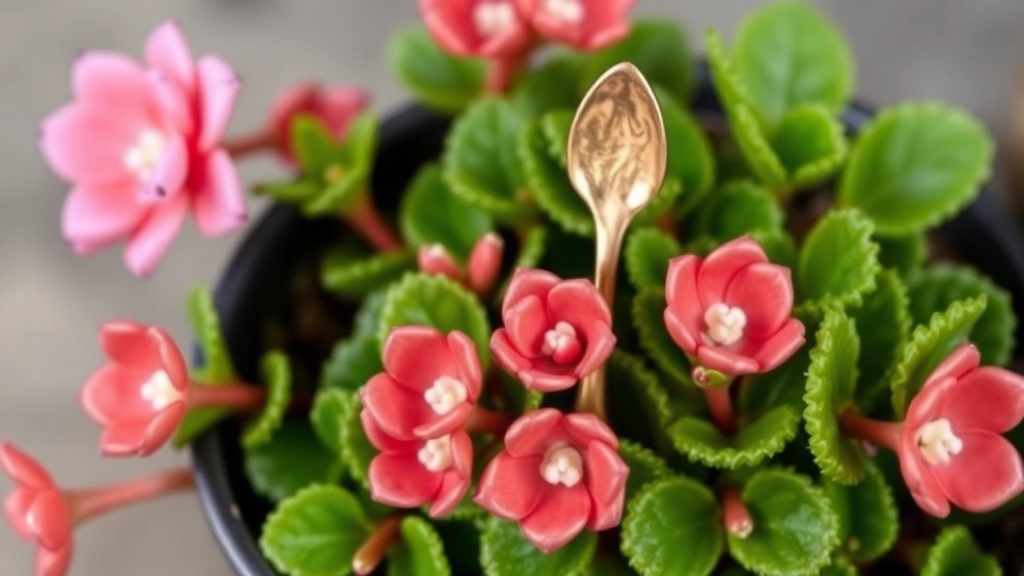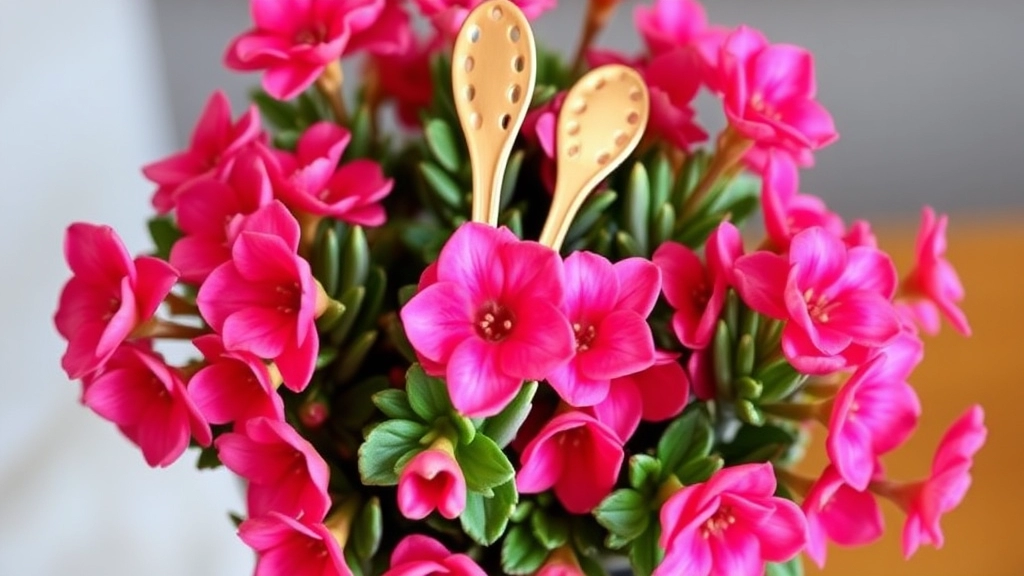Kalanchoe Copper Spoons: A Unique Touch for Your Garden
If you’re looking to add a unique touch to your garden, Kalanchoe Copper Spoons might be just what you need. Known for its striking copper-hued leaves, this plant is perfect for Australian conditions. Whether you’re a seasoned gardener or a newbie, understanding the best growing conditions for Kalanchoe Copper Spoons in Australia is crucial. From light and water needs to frost tolerance, I’ll guide you through everything to keep your plant thriving.
Where to Buy Kalanchoe Copper Spoons in Australia
Finding the right place to buy Kalanchoe Copper Spoons in Australia can be tricky, but I’ll help you navigate the options. From local nurseries to online retailers, I’ll point you in the right direction. Plus, I’ll share tips on incorporating these stunning plants into both garden and indoor designs, ensuring they become a standout feature in your green space.
Unique Characteristics of Kalanchoe Copper Spoons
Have you ever wondered what makes Kalanchoe Copper Spoons a standout choice for both indoor and outdoor gardens?
These succulent plants are known for their striking features that set them apart from other varieties.
Best Growing Conditions for Kalanchoe Copper Spoons in Australia

So, you’re keen on nurturing Kalanchoe Copper Spoons, right?
Let’s dive into the best growing conditions for these unique beauties in Australia.
Light Requirements
First off, light is key.
Kalanchoe Copper Spoons thrive in bright, indirect sunlight.
- Ideal Spot: Near a window with filtered light.
- Avoid: Harsh, direct sunlight that can scorch the leaves.
Temperature and Humidity
Next up, let’s chat about temperature.
These plants prefer warmer climates, making them perfect for Aussie gardens.
- Ideal Temperature: Between 20-25°C (68-77°F) during the day.
- Nighttime: They can handle cooler nights but aim for not below 10°C (50°F).
- Humidity: They’re not fussy, but a dry environment is best.
Soil Type
Now, what about soil?
You’ll want a well-draining mix.
- Potting Mix: A cactus or succulent mix works wonders.
- DIY Option: Combine regular potting soil with sand or perlite for extra drainage.
Watering
Let’s not forget about watering.
Kalanchoe Copper Spoons prefer to dry out between waterings.
- Frequency: Water every 2-3 weeks during the growing season.
- Check: Always poke your finger into the soil. If it’s dry, it’s time to water.
Fertilisng
Lastly, a bit of fertilising can go a long way.
- Type: Use a balanced, water-soluble fertiliser.
- Frequency: Once a month during the growing season.
As we explore the versatility of Kalanchoe Copper Spoons, it’s essential to consider how to effectively integrate these unique plants into your garden and indoor spaces.
### Creating a Striking Garden Display
Kalanchoe Copper Spoons can serve as eye-catching focal points in your garden. Here are some ideas to incorporate them:
– **Container Gardens:** Use decorative pots to showcase Copper Spoons on patios or balconies. Their unique shape and vibrant leaves can complement other succulents or flowering plants.
– **Rock Gardens:** Place them among stones and gravel to mimic their natural habitat, enhancing the visual appeal of your garden.
– **Mixed Borders:** Combine Copper Spoons with drought-tolerant plants like agaves or sedums for a stunning contrast in texture and colour.
### Enhancing Indoor Spaces
Incorporating Kalanchoe Copper Spoons indoors can breathe life into your living areas. Consider the following suggestions:
– **Window Sills:** They thrive in bright light, making window sills an ideal spot. Their unique leaves will catch the eye.
– **Table Centrepieces:** Use Copper Spoons in stylish pots as centrepieces for dining or coffee tables. Pair them with candles or decorative stones for added flair.
– **Shelving Displays:** Arrange them on shelves with other plants or decorative items to create a layered look.
### Design Tips
When incorporating Copper Spoons, keep these design tips in mind:
– **Balance:** Pair them with plants of varying heights and textures to create visual harmony.
– **Colour Coordination:** Choose pots that complement the rich hues of the Copper Spoons, such as terracotta or metallic finishes.
– **Seasonal Themes:** Change the surrounding decor with the seasons to keep the display fresh and inviting.
For more information on caring for Kalanchoe varieties, check out our [complete guide to Kalanchoe paddle plant care](https://planthq.org/complete-guide-to-kalanchoe-paddle-plant-care/) and [how to propagate Kalanchoe in water](https://planthq.org/how-to-propagate-kalanchoe-in-water-stepbystep-guide/).
Common Care Mistakes to Avoid with Kalanchoe Copper Spoons

As we explore the care of Kalanchoe Copper Spoons, it’s essential to understand the common pitfalls that can hinder their growth and vibrancy. Many gardeners, whether seasoned or new, often face challenges that can be easily avoided with a little insight.
1. Overwatering
One of the most frequent mistakes is overwatering. Kalanchoe Copper Spoons thrive in well-draining soil and require infrequent watering.
- Tip: Water only when the top inch of soil feels dry.
- Warning: Standing water can lead to root rot.
2. Insufficient Light
These plants love bright, indirect sunlight.
- Tip: Place them near a window where they can soak up the light without being scorched.
- Warning: Too little light can cause leggy growth and dull colours.
3. Ignoring Temperature Preferences
Kalanchoe Copper Spoons prefer warmer temperatures, ideally between 18°C and 24°C.
- Tip: Avoid exposing them to cold drafts or sudden temperature changes.
- Warning: Cold stress can stunt growth and damage leaves.
4. Neglecting Fertilisation
While these plants don’t require heavy feeding, neglecting fertilisation can limit their growth.
- Tip: Use a diluted, balanced fertiliser during the growing season.
- Warning: Over-fertilising can lead to salt build-up and damage roots.
5. Not Pruning
Pruning is vital for maintaining shape and encouraging new growth.
- Tip: Regularly trim dead or yellowing leaves.
- Warning: Failure to prune can lead to a crowded and unhealthy plant.
Where to Buy Kalanchoe Copper Spoons in Australia
Finding the right source for Kalanchoe Copper Spoons can be a challenge, especially if you want healthy plants that thrive.
If you’re wondering where to purchase these unique succulents, here are some reliable options:
- Local Nurseries: Many local garden centres and nurseries stock Kalanchoe Copper Spoons. Visiting in person allows you to inspect the plants for health and vitality.
- Online Retailers: Websites like Etsy or eBay often feature sellers who specialise in succulents. Be sure to check reviews and seller ratings before making a purchase.
- Specialist Cactus and Succulent Stores: Some stores focus solely on cacti and succulents. These shops often have knowledgeable staff who can offer care tips.
- Botanic Gardens and Plant Fairs: Keep an eye out for plant fairs or events at botanic gardens. These venues frequently offer rare and unique plants, including Kalanchoe Copper Spoons.
- Social Media Groups: Joining local gardening groups on platforms like Facebook can lead to opportunities to buy or trade plants with fellow enthusiasts.
When purchasing, ensure that the plant is healthy, with no signs of pests or disease. For more detailed information on growing these plants, check out our complete guide to growing Kalanchoe Copper Spoons. Additionally, if you’re interested in other varieties, you might find our comprehensive Kalanchoe species list helpful.
FAQs About Growing Kalanchoe Copper Spoons in Australia
What are the light requirements for Kalanchoe Copper Spoons?
Kalanchoe Copper Spoons thrive in bright, indirect sunlight. Place them near a window with filtered light and avoid harsh, direct sunlight that can scorch their leaves.
What temperature is ideal for Kalanchoe Copper Spoons?
These plants prefer warmer climates, with ideal daytime temperatures between 20-25°C (68-77°F). They can handle cooler nights but aim to keep the temperature not below 10°C (50°F).
What type of soil should I use for Kalanchoe Copper Spoons?
A well-draining mix is essential. A cactus or succulent mix works well, or you can combine regular potting soil with sand or perlite for extra drainage.
How often should I water Kalanchoe Copper Spoons?
Water every 2-3 weeks during the growing season. Ensure the soil dries out between waterings by poking your finger into the soil to check for dryness.
How should I fertilise Kalanchoe Copper Spoons?
Use a balanced, water-soluble fertiliser once a month during the growing season. Avoid over-fertilising to prevent salt build-up and root damage.
Common Care Mistakes to Avoid with Kalanchoe Copper Spoons
What happens if I overwater my Kalanchoe Copper Spoons?
Overwatering can lead to root rot. Water only when the top inch of soil feels dry to prevent standing water.
Why is my Kalanchoe Copper Spoons growing leggy and losing colour?
Insufficient light can cause leggy growth and dull colours. Ensure the plant receives bright, indirect sunlight to maintain its vibrancy.
What temperature changes should I avoid for Kalanchoe Copper Spoons?
Avoid exposing the plant to cold drafts or sudden temperature changes, as cold stress can stunt growth and damage leaves.
Do Kalanchoe Copper Spoons need fertilisation?
Yes, but in moderation. Use a diluted, balanced fertiliser during the growing season to support growth without causing salt build-up.
Why is pruning important for Kalanchoe Copper Spoons?
Pruning helps maintain the plant’s shape and encourages new growth. Regularly trim dead or yellowing leaves to prevent overcrowding and maintain plant health.
References
-
Gardening Know How – Kalanchoe Copper Spoons Care
-
The Spruce – Growing Kalanchoe Copper Spoons
-
Better Homes & Gardens – Kalanchoe Copper Spoons Care Guide
